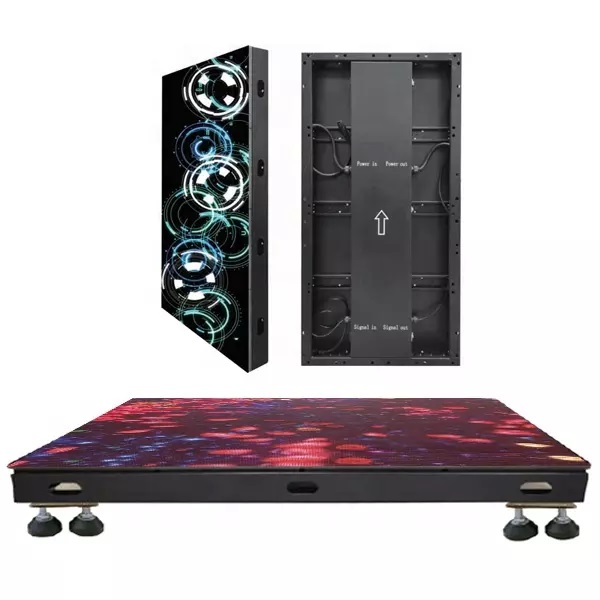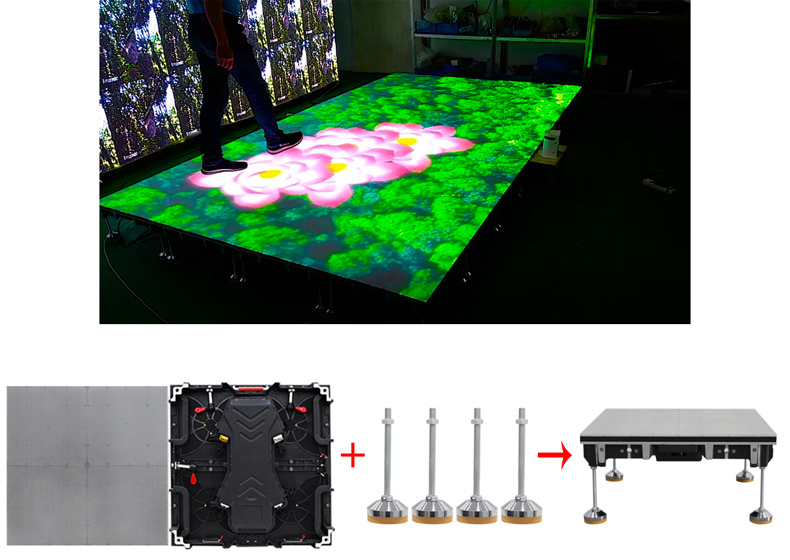Dance floor LED screens have revolutionized how we experience live events, performances, and interactive environments. These innovative displays combine cutting-edge technology with creative design, transforming traditional dance floors into dynamic, immersive spaces. This article delves into the concept, technical specifications, pricing, features, interactivity, and practical applications of dance floor LED screens.
What is a Dance Floor LED Screen?
A dance floor LED screen is a specialized LED display designed to be installed on floors. These screens are robust, durable, and capable of withstanding heavy foot traffic, making them ideal for events, concerts, and entertainment venues. Unlike traditional LED screens, dance floor displays are built with reinforced materials and slip-resistant surfaces to ensure safety while delivering vivid visual effects.

Common Pixel Configurations
The pixel pitch of a dance floor LED screen determines its resolution and image clarity. Common pixel pitches for dance floor screens include:
- P2.9-P5: High resolution, suitable for close viewing in indoor venues.
- P6-P10: Medium resolution, often used in larger venues with moderate viewing distances.
- P10 and above: Ideal for outdoor events or large-scale applications with longer viewing distances.
The choice of pixel pitch depends on the venue size, audience proximity, and desired visual effect.
Price Range
The cost size, materials, and additional features. Below is a general price range for reference:
- Entry-Level Screens: $300–$600 per square meter (typically higher pixel pitch, fewer advanced features).
- Mid-Range Screens: $600–$1,000 per square meter (suitable for most indoor and outdoor applications with moderate resolutions).
- High-End Screens: $1,000+ per square meter (lower pixel pitch, advanced interactivity, and robust construction for heavy use).
Customization, installation, and control system costs can also influence the final price.
Key Features of Dance Floor LED Screens
1. Durability and Load-Bearing Capacity
Dance floor LED screens are designed to withstand high-impact activities. Many models can support weights of up to 2,000 kilograms per square meter, making them suitable for large gatherings and performances.

2. Slip-Resistant Surface
To ensure safety, these screens feature anti-slip coatings that reduce the risk of accidents, even during dynamic performances or high-energy activities.
3. Vivid Visual Performance
With high brightness levels, wide color gamuts, and excellent refresh rates, dance floor screens deliver stunning visuals that enhance the atmosphere of any event.
4. Interactive Capabilities
Many dance floor LED screens feature touch or motion sensors that allow real-time interaction. These screens can respond to movements, creating an engaging experience for participants and elevating the entertainment value.
5. Modular Design
The modular construction allows for flexible configurations and easy installation. Panels can be arranged to fit various shapes and sizes, including custom designs.
Interactive Functions
Dance floor LED screens are equipped with interactive technologies that enhance audience participation:
- Motion Detection: Sensors respond to footsteps or gestures, triggering dynamic visual effects.
- Touch Sensitivity: Some models allow users to interact directly with the screen surface.
- Audio-Visual Synchronization: Integrated systems enable seamless coordination of visuals with music and sound effects.
These interactive features make dance floor LED screens ideal for immersive experiences and creative performances.
Applications of Dance Floor LED Screens
1. Nightclubs and Entertainment Venues
Dance floor LED screens create a vibrant and dynamic atmosphere, enhancing the energy of nightclubs, bars, and lounges.
2. Concerts and Stage Performances
These screens are perfect for live music events, creating a visually immersive stage environment that complements the performance.
3. Corporate Events and Product Launches
Businesses use dance floor screens for impactful product showcases, branding, and engaging audience interactions.
4. Weddings and Private Parties
Dance floor LED screens add a touch of elegance and excitement to weddings and other celebrations by offering customizable visual effects.
5. Theme Parks and Museums
Interactive dance floors are often found in themed attractions and exhibitions, providing visitors with memorable and engaging experiences.
Conclusion
Dance floor LED screens are an innovative solution for transforming spaces into interactive, visually stunning environments. With customizable pixel pitches, robust construction, and advanced interactive features, they are suitable for various applications, from entertainment venues to corporate events. By carefully selecting the right specifications and features, businesses and event organizers can create unforgettable experiences that captivate their audiences.

